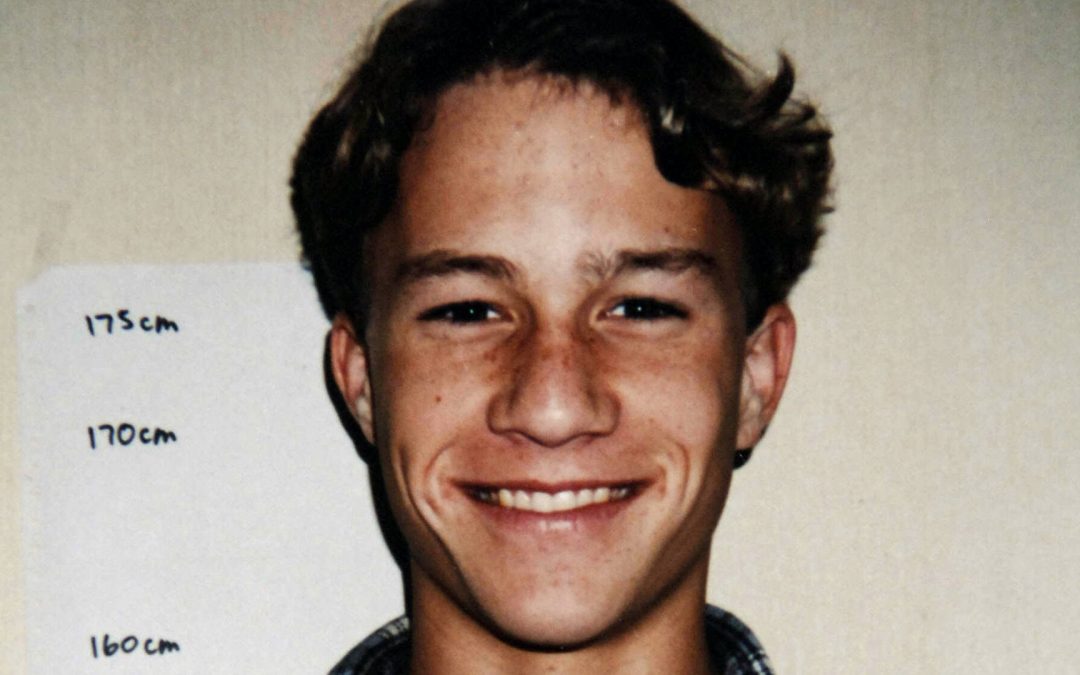If there is any one image you take away from “I Am Heath Ledger,” it’s that of Ledger staring into the camera, spinning it around and around, creating his own sort of impromptu DV-selfie version of the swirling-camera POV dance duets in “Saturday Night Fever” and “Carrie.” The shots are emblematic for a couple of reasons. Ledger, as we learn, was always filming and photographing things, including himself and his friends; it was part of his compulsion to make art, to filter his experience through a vast array of lenses. The bounty of images he left behind is a testament to that creative hunger. Yet the fact that he got off on filming himself so much makes its own statement. “I Am Heath Ledger” is a portrait of the artist as an angelic young narcissist, a self-conjured celebrity image-maker. He was always pushing himself to the next level, which is why, at the age of 28 (when he died), he was already the greatest actor of his generation. But part of that gift was for turning the world into his mirror.
Directed by Adrian Buitenhuis and Derik Murray, “I Am Heath Ledger” is a documentary biography, built around hours of privately shot footage, that is unconventional and in many ways haunting, because it takes you up close to the person Heath Ledger was: a true free spirit, who lived without the rules most people in the entertainment business cling to — and without the boundaries. Raised in Perth, Australia, he’s described by his mother, Sally Bell, as a wild kid who was not about to settle down, no matter what anyone told him, so his parents simply hoped (and trusted) that he would turn out all right, even if that meant he left home as a teenager, cruising into the city for adventure. He already possessed the preternatural confidence of fame, which is one reason he drifted into acting and wound up in Los Angeles, winning people over wherever he landed.
As superstars go, he was a flower child. He treated his house in L.A. as a rotating crash pad for fellow Aussies (and many others), he treated life as a communal party, and he viewed himself as a multimedia artist: doing beautiful scrawls on the the photos he took, making music and music videos (at least one, his psychedelic black-and-white hip-hop video for “Cause An Effect” by N’fa, utterly entrancing), with movie acting as just one more flavor of his ferment. That may sound pretentious, but it relates to the special quality that Ledger had as an actor. He didn’t want to “play a part.” He wanted to flood the screen with a version of himself. One of the only other actors to do that was Marlon Brando, and though Ledger, who was 19 when he shot the film that would make his first splash, the witty reconfigured teen Shakespeare comedy “10 Things I Hate About You” (1999), started off as a heartthrob (as did Brando), he built out his persona with every role.
Each movie was a growth ring, an escalation of his audacity, and “I Am Heath Ledger” reveals that evolution in terrific detail. On the set of “The Patriot” (2000), he was a dutiful apprentice, treating his costar Mel Gibson — a fellow Aussie he idolized — as his mentor. But in “A Knight’s Tale” (2001), that swashbuckling medieval pop opera, he was right to take his greatest lesson from the ad campaign. The posters, built around Ledger’s glowering face with the line “He will rock you,” made Ledger gasp at (and grasp) the meaning of his own stardom. He discovered slow-talking gravitas in “Monster’s Ball,” did an exuberant fake-teeth gonzo showpiece turn in “Lords of Dogtown,” and then, in “Brokeback Mountain” (2005), revealed himself to be an acting genius (and yes, I mean that). With a voice of muffled desire and a mouth (in his own words) “like a clenched fist,” he conjured, and made poetic, the sexual consciousness of a different time.
It was tragic, and transporting, and from that point on he was flying, culminating in the moment when he went full Brando in “The Dark Knight.” His Joker, a greasy-haired head case sucking on his scars and his demons, was the first — and still the only — flat-out ’70s Method psychodrama-without-a-net performance in a contemporary blockbuster, and if Ledger hadn’t died before the movie was released, it would have made him the king of Hollywood (and did for a while anyway, almost as if he was still with us).
“I Am Heath Ledger” offers fascinating off-camera images and clips of Ledger at work in all these films; the movie is right to be as consumed by his art as he was. Yet, of course, he had other sides, and it’s hard not to feel that they’ve been whitewashed. His relationship with Michelle Williams gets bathed in a rosy Brooklyn glow, and he’s hailed as a loving and devoted father to their daughter, Matilda (which I believe). But when his family falls apart, the fracture comes out of nowhere. It’s not that the film suddenly needed to turn into Us Weekly, but the intimacy of its portrayal breaks down.
After Ledger and Williams broke up, we learn that he entered a difficult period and had trouble sleeping. Hence (according to the movie) his use of sedatives, and hence his accidental death, on Jan. 22, 2008. But the film also tells us that Ledger, though he adored life, spoke to friends of dying young, and the pieces don’t really add up. If he struggled with addiction, then the film should have been up front about it — not voyeuristically, but to fill in the demons that were there. As it stands, “I Am Heath Ledger” is a catchy and seductive portrait of an extraordinary artist, but it leaves you wanting more, because you know it’s not close to being all of Heath Ledger.

